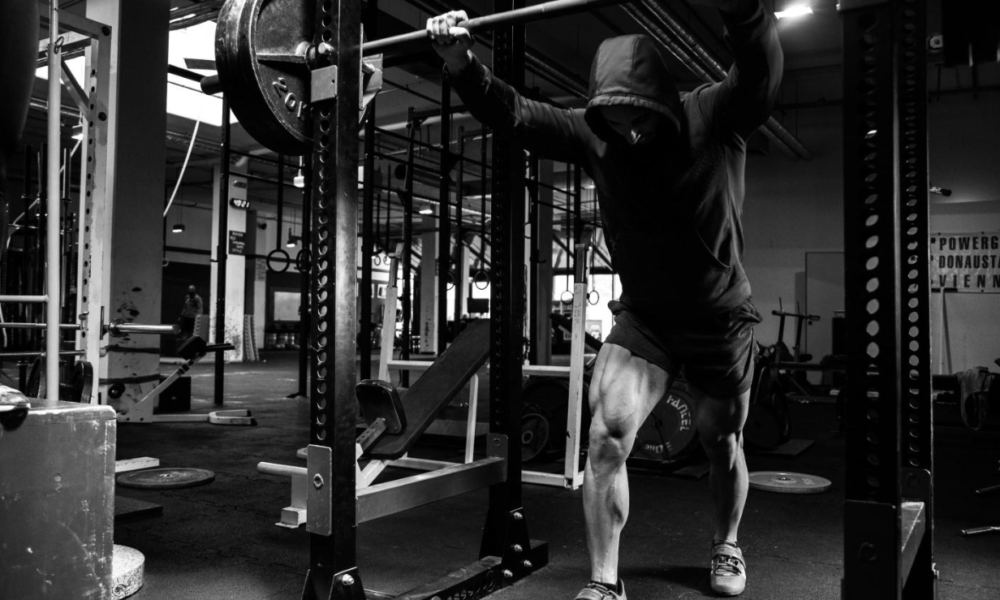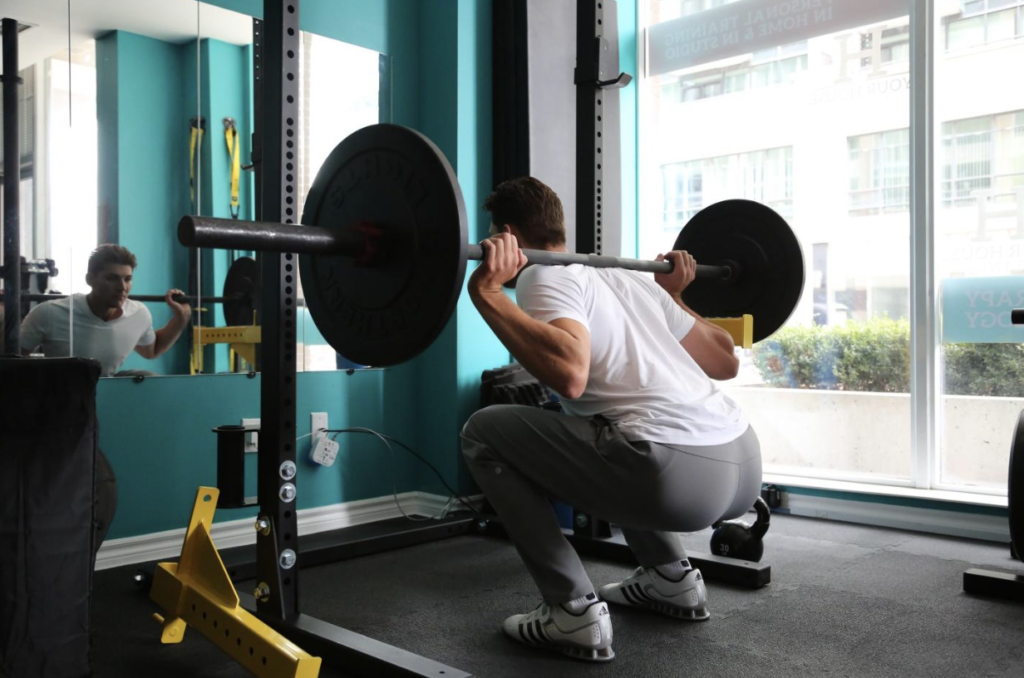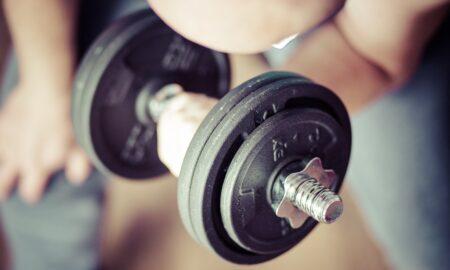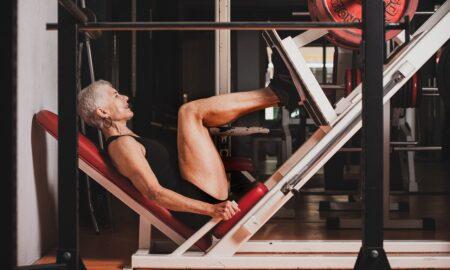

Doing a squat engages different muscles in your body from both the upper and lower body and forces them to work simultaneously. Most of these muscles are essential in performing day-to-day tasks.
Although squats offer numerous advantages, you need to do them correctly to maximize the benefits of the workout and also to reduce the chance of injury. While there are several variations of squats, one you may not know of is high-bar vs low-bar squats. In this article, we will go over the proper way to do both, and examine the differences between the two.
Before that, let’s learn why we squat in the first place!
Why It’s Important To Squat
Adding squats to your workout offers numerous advantages such as:
1. Burning Calories
When you hear the word calories, your brain is likely to think about aerobic exercises such as jogging and cycling. However, high-intensity exercises like squats can help to burn calories too.
2. Strengthening Your Core
A strong core makes it easy to perform everyday movements like standing, turning, and bending. It also helps improve balance, maintains a good posture, and eases lower back pain. If performed correctly, squats can strengthen your core while helping to better support the muscles in your back.
3. Boosting Your Athletic Ability
Repeatedly doing squats can help improve your athletic ability, especially if you compete in sports. Squats help develop strength and speed, which will enhance athletic performance.
4. Strengthening Lower Body Muscles
The majority of your strength and power is found in your lower body. You involve your hamstrings, glutes, quadriceps, calves, and hip flexors in so many movements throughout your day. Squats help tone and strengthen the lower muscles of your body, making your workouts easier.
5. Minimizing Risk of Injury
By performing squats, you will be strengthening your lower body muscles. Over time, you will successfully execute full-body movements while maintaining good balance and posture. Thus, it helps reduce the chances of suffering an injury by giving you better mobility and also flexibility.

High Bar vs. Low Bar Squats
As you get pumped for a heavy squat session, it is essential to have a game plan in your head. Which squats will you be doing, how many reps, and sets, and at what intensity?
The two common squats for bodybuilders and powerlifters are the high-bar and low-bar squats. Here is everything you need to know about the two terms, their differences, and how to do each.
How are High-Bar Squats Different from Low-Bar Squats?
The main difference is the bar placement on the back when doing the exercise. When performing high-bar squats, the barbell will rest on top of the shoulders, under the C7 vertebrae. During high-bar squats, your trainer might tell you to “create a shelf for the bar using your traps.”
On the other hand, when doing low-bar squats, you will place the bar at the back of your shoulders. The focus is on pinning the bar to your back instead of having it sit there like in a high-bar squat. The bar will still be further down on your back than when doing a high-bar squat.
How to Safely Do a High-Bar Back Squat
- Center yourself as you step up to the bar
- Ensure your feet are shoulder-width apart
- Brace your core and place your hands on the bar slightly outside your shoulders
- Engage your trap, keep your shoulders from your ears and settle the bar on your upper bar
- Stand firm to unrack the bar, step back, and adjust your feet position
- Press your knees out, keeping your torso upright to ensure the bar remains vertical
- Squat, and as soon as you reach depth, come back to standing by driving your feet into the ground
- Re-brace and repeat
How to Safely Do a Low-Bar Squat
- Center yourself as you step up to the bar
- Ensure your feet are a little wider than the shoulder-width
- Brace your core, pull your elbows back and engage your last to create a shelf with your rear delts
- Pin the bar on the rear delts, and ensure it is tightly pinned to void slips after unracking
- Lean forward slightly, unrack the bar, and settle it on your back
- Step back, establish a foot position, press your knees out, descend into a squat and ensure the bar remains vertical
- As you reach depth, resume your standing position by driving your feet into the ground
- Although it might be tempting to use your torso to lift the bar, don’t. Instead, engage your hips
- Rebrace and repeat
Two Differences between them
There are two main differences between low and high-bar squats;
-
General Strength
Although both squats will increase your strength, they have some differences. This study shows that low-bar squat brings more muscle activities than high-bar squats. So, if you are squatting to improve one-rep max, you might consider doing low-bar squats more often.
-
Balance and Core Strength
When performing both squats, the bar remains balanced over your midfoot as you move. Your foot should have three points of contact with the floor – the big toes, heel, and outside ball of your led. When doing the high-bar squat, the bar is high up in your torso. Without proper balance, the bar will have leverage over you. So, you should be careful to avoid injuries as your spine might collapse if you are not well balanced. In contrast, in low-bar squats, the bar is lower in your torso and, thus, has less leverage.
When Should I Do a High-Bar and Low-Bar Squat?
High-bar squats are the most common and are great for numerous reasons. They are beneficial for weightlifting and they resemble an athletic stance. For the common weightlifter and athlete, they may find high-bar squats to be more beneficial. High-bar helps train the hip, torso, ankle, and knees, similar to competition movements.
In comparison, low-bar squats are less common and are mainly used for two reasons – to move weight and increase the load. The squat style of the low-bar squat loads the posterior chain by forcing the hips to produce more force.
They are better for powerlifting as it needs strength in the squat movement. Low-bar squats are also ideal for athletes dealing with knee issues since the weight stress during the squat is on the hips, glutes, and hamstrings. So, the hamstrings pull the tibia and balance the force on the knee-reducing chances of injury.

4 Reasons to Consider Low-bar Squats than High-Bar Squats as a Powerlifter
As a powerlifter, you can benefit more from low-bar squats because:
1. They Offer Better Mechanics
You can lift more weight when doing low-bar squats than when doing high-bar squats. Since you place more stress and demand on the glutes and hamstrings, the muscles work together to extend the hips. Additionally, since the barbell is lower on your back and closer to your hips, the back remains tighter, ensuring you maintain your balance. Most lifters find low-squats more comfortable since they transfer the load to the hips rather than the knees.
2. Boosts Your Posterior Strength
Low-bar squats help boost posterior chain strength. The posterior chain refers to muscles running down the back of the body, starting from the base of your skull down. Back muscles are needed for deadlifts, and low-bar squats help increase the posterior strength.
3. More Comfortable
If you have been to the gym, you have noticed most of them have squat pads and manta rays in the squat racks. They are primarily used during high-bar squats, which could be hurtful. Low-bar squats are more comfortable and offer numerous advantages too.
4. Most People Meet the Mobility Requirements
Low-bar squats can be done with lower mobility requirements compared to high-bar squats. High-bar squats need a large degree of ankle mobility which not everyone has. Fortunately, you can do low-bar squats without high ankle mobility.
Take Away
Squats help develop strength and power. However, these are just some of the benefits. When done correctly, squats can help burn calories, prevent injuries, improve your balance, and ensure you maintain a good posture.
Knowing the difference between high-bar and low-bar squats can take your leg strength to the next level! Next time you are at the gym doing legs, try the squat type you are not accustomed to. Make sure to start with a manageable weight.
Remember, when trying either of these at first, it is recommended to do it with a trainer. Good luck!





















You must be logged in to post a comment Login